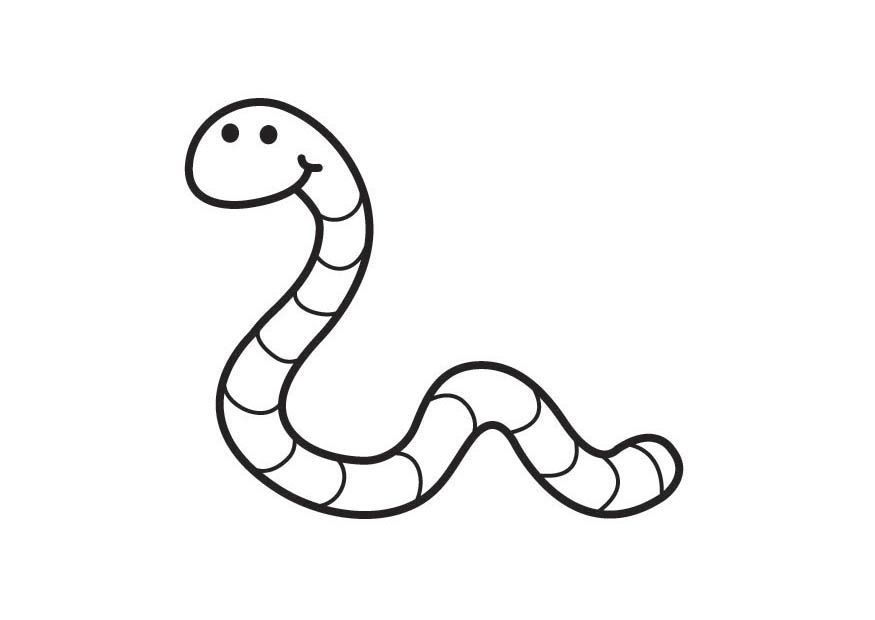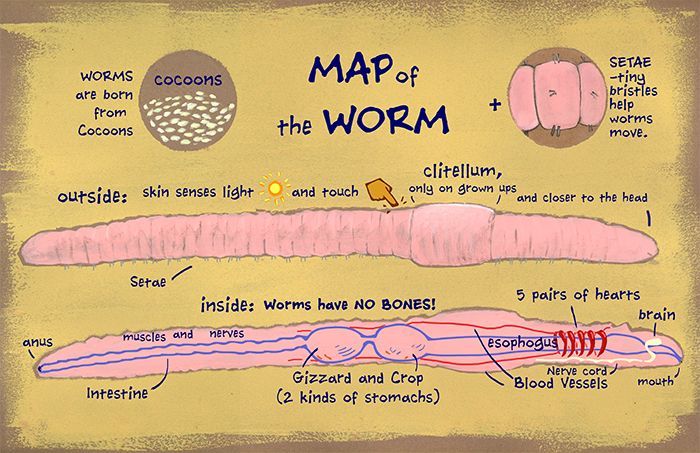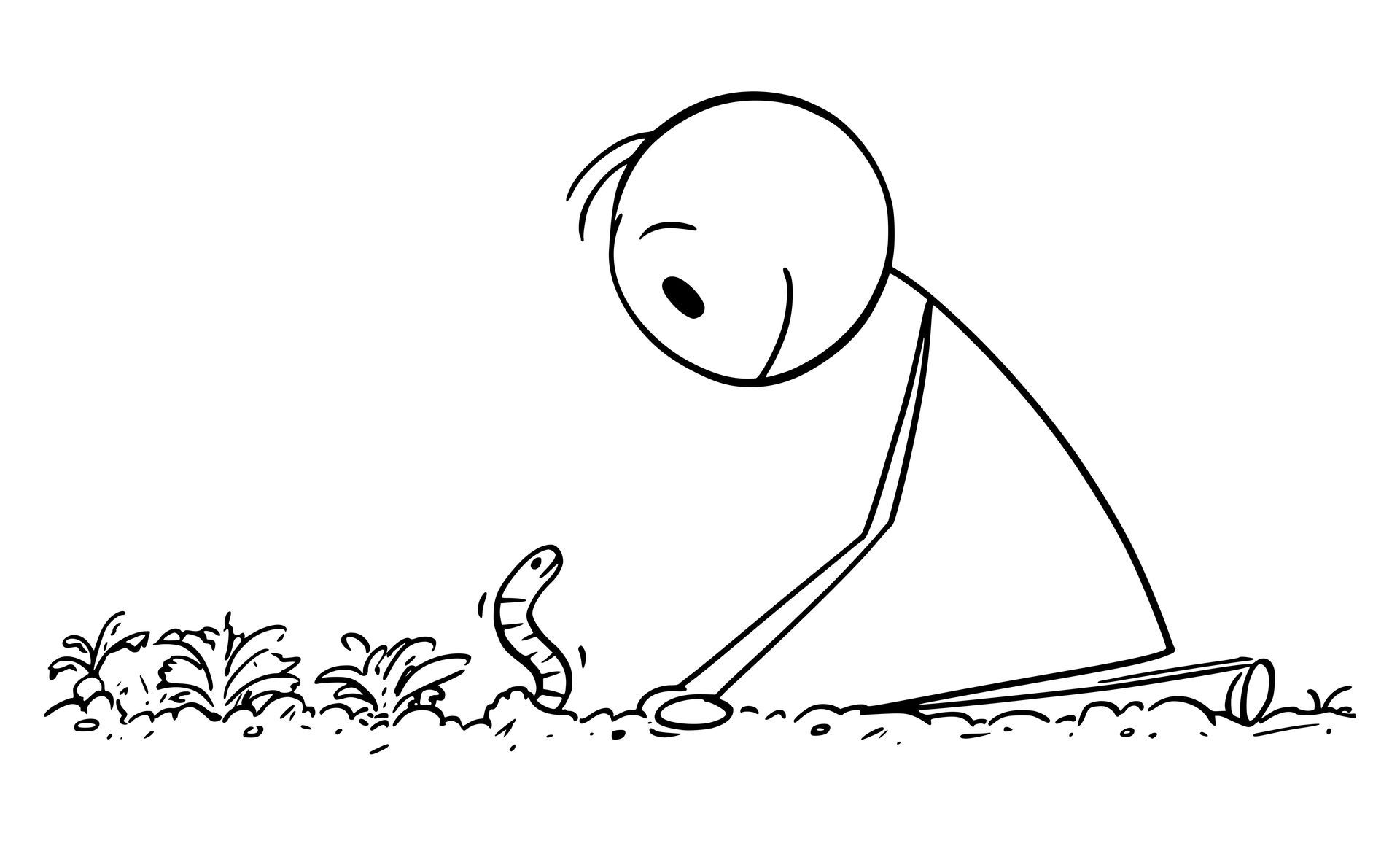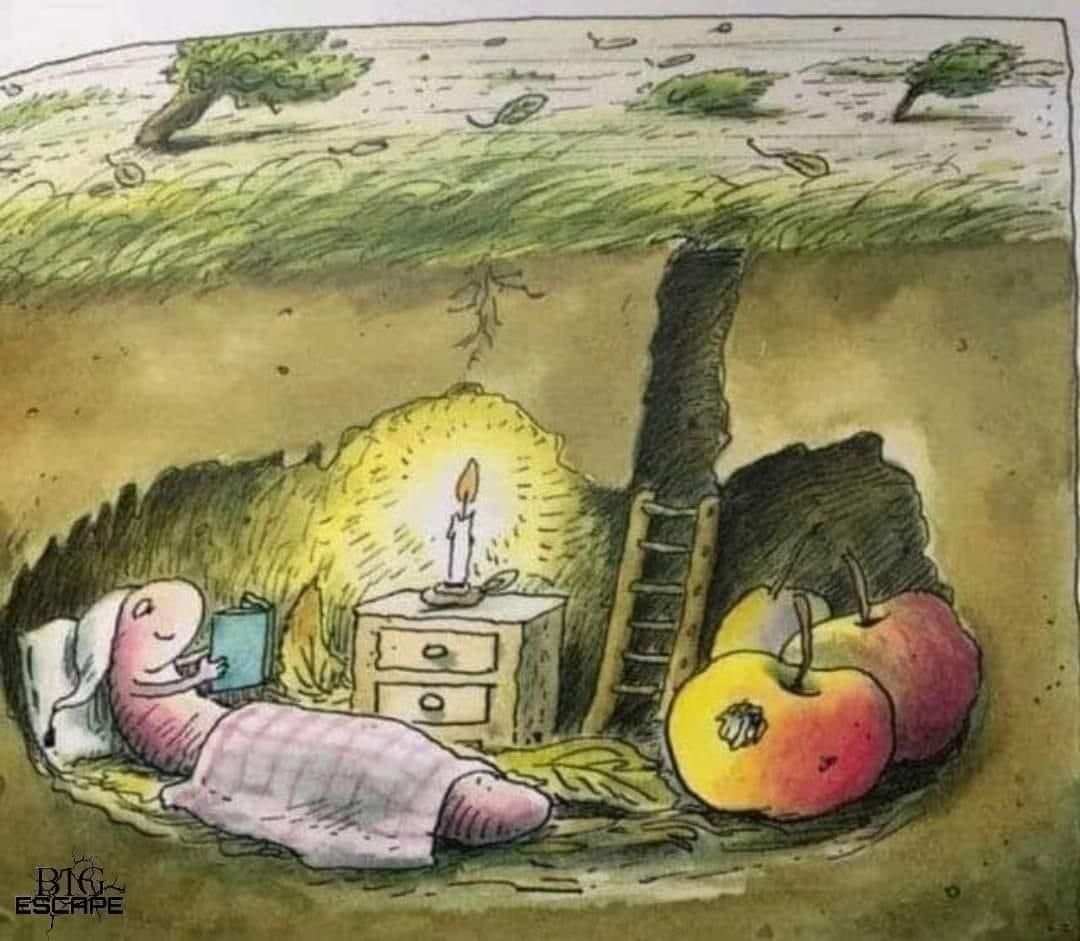Have each student draw and name their worm to display with the bin. Then, write a worm biography.
I have a favourite worm. It's name is __________. It is as long as a _______________ and is the colour ________________________. It is special because _______________________. My worm lives in the ____________. It loves to eat ________________.
If my worm could talk, it would say, "_________________________________________". If my worm could play a game, it would be _________________________________________. If my worm were a superhero, it would be________________________________________. If my worm could describe me, it would say, "My friend, _____________________________________". I love my worm because __________________________________________.



Wormy Wednesdays?
Incorporate the worm bin into your classroom routine. Designate each Wednesday as the day you will collect suitable leftover food from lunches to feed the worms, or take food from the stockpile in the freezer to feed the worms.
Designate a student as "Worm Parent" for the week. Have them be in charge of feeding the worms and making sure the bin is not too dry.
Write a Worm Story
One night I went to sleep and the next morning I woke up as a worm. I didn't know which end was my head and I tried to _____________________________.
I slithered out of bed and then
______________________________.
Before I went to school, I wanted a delicious breakfast. I had a special craving for
________________________________.
When I got to school, no one recognized me because
___________________________________.
The teacher saw me wiggling in my seat and said
"___________________________________."
After school, it was raining so
__________________________________.
The next morning I awoke again as a child. Whenever I see a worm, I will
___________________________________.
Perform a Lunchbox Audit
This simple activity will engage the whole class in learning more about what we can and cannot feed worms. It will also allow students to visualize the amount of waste we create.
- Explain to students that you will be looking at the waste from their lunchboxes after lunch hour.
- Have the students drop off their waste on a covered table.
- Ask the group for their reactions on the amount of waste they collected?
- Sort waste into what types of foods are good for worms to eat, and what types are not good for the worms to eat.
- Consider creating a waste record sheet.
- Ask students to consider strategies that they can use to reduce the amount of waste they have in their lunches.
Make a Worm Menu
Write and illustrate a menu of what to and what not to feed your worms to display in your classroom above the bin.
GIANT WORM
A 6 piece printable giant worm that can be used in various ways in the classroom:
- Use as a giant jigsaw puzzle and have the students re-assemble the worm
- Use as a canvas or mural to paint and colour the worm
- Use as a backdrop to display worm facts or, your 300 worm pet names
- The options are endless!

Make the worms a comfy bed
Have students develop various recipes for worm bedding.
Allow them to collect materials and make their own bedding. Consider allowing them to collect litter on the school yard that could be repurposed as bedding.
Allow them to use scissors to cut up newsprint, cardboard, toilet paper rolls, egg cartons or collect and rip up dried leaves.
Mix to make bedding.
Remember to add enough water to give the consistency of a wrung out sponge.
Write directions for a worm sitter
Have students put into worms.. I mean words, the important things someone would need to know to care for the worms.

Hatching Cocoons
- During your worm count, collect any worm cocoons you find.
- Place the cocoons in a small container with a moistened paper towel.
- Add 2 pieces of oatmeal for food.
- Each day, for 5 days, observe your cocoons with a magnifying glass. What do you notice? Does the colour change?
- How many worms can hatch from each cocoon?
Worm Math
The opportunities are endless using worms to supplement math teaching.
- Measure an adult worm and a baby worm
- Weigh the amount of organic waste you prevent from going to the landfill a year. Record your results on a graph. Can you compost the weight of a child in your class?
- Conduct a worm census. Empty 1/4 of your bin. Count the worms and have the students determine the population of the entire bin. Do this a couple of times a year to see how the population changes.
- ESTIMATION: Pull out a pile of worms. Have the students estimate how many there are before counting.
WHat DO OUR WORMS LIKE
Get to know your worms' eating habits with these simple experiments.
What do worms like best?
Bury two different foods in different parts of the bin. What do the worms eat first?
Does size matter?
Take two apple cores. Chop one up into smaller pieces and keep one whole. Bury the whole core in one part of the bin and the chopped pieces together in another. What decomposes more quickly? Why?
Frozen or raw?
Bury a frozen apple core in the bin and a raw apple core in the bin. Which one do the worms eat first? Why?
Harvest Your Black Gold (Castings)
Once the bin has been going for about 4 months, much of the bedding and garbage will be converted to castings. As the proportion of castings increases, the quality of the environment for the worms decreases. To keep the worms happy, it is important to remove the castings every few months and replace with new bedding.
Living Soil
LOOK WHAT POO CAN DO!
There is no beating worm castings as an organic fertilizer.
Grow seedlings using different soil mixtures to see what best supports plant growth.
- Dirt
- Garden soil
- Soil mix A: 50% garden soil, 50% worm castings
